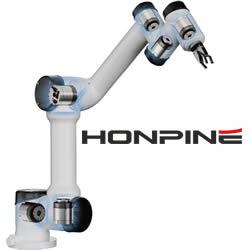360° Optics Tutorial
Robotics, artificial intelligence, and 5G are at the heart of Theresa May's new industrial strategy
Car Work: The Long-Term View of Autonomous Transportation
RTOS 101: Semaphores and Queues
Segway's 'mobility robot platform' to begin mass production
Artificial fingertip that 'feels' wins international robotics competition
Robots Took My Job but I Don't Care
CTRL The Robot. A modern industrial robot for the desktop.
$18.867 billion Paid to Acquire 50 Robotics Companies in 2016
Brave New World of RPA
Robotics, Trump and Brexit turn up the heat amid the snow of Davos
Robots: Legal Affairs Committee calls for EU-wide rules
The 'intelligent' robot companion that plays chess as a hobby, serves coffee and learns from its own experiences
The New Emotive AI Companion for Older Adults
Special Tradeshow Coverage for ATX West 2017
Records 2431 to 2445 of 3729
First | Previous | Next | Last
Featured Product

HONPINE - Robot Reducers and Gearboxes
Robotics and Automation - Featured Company

